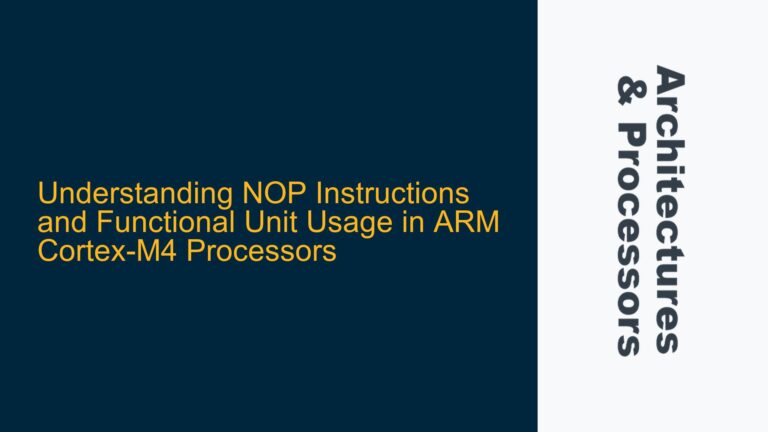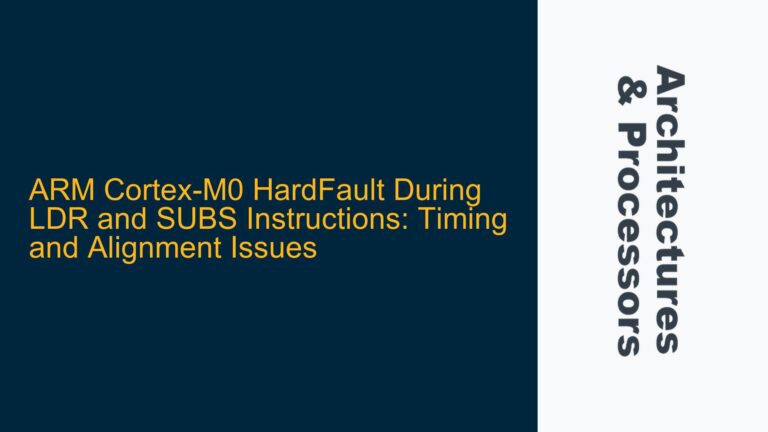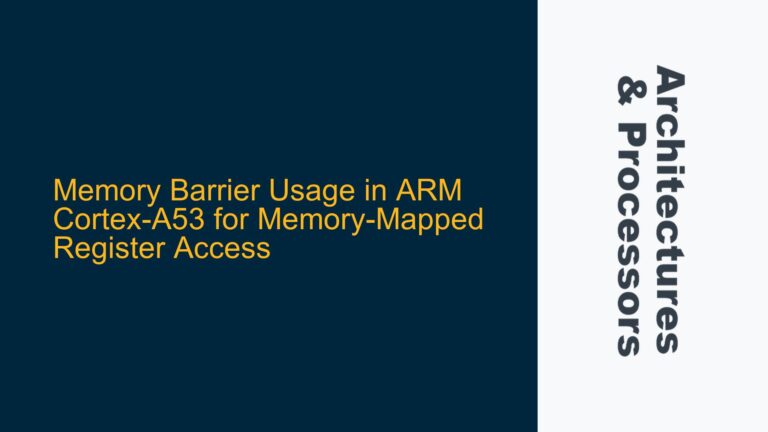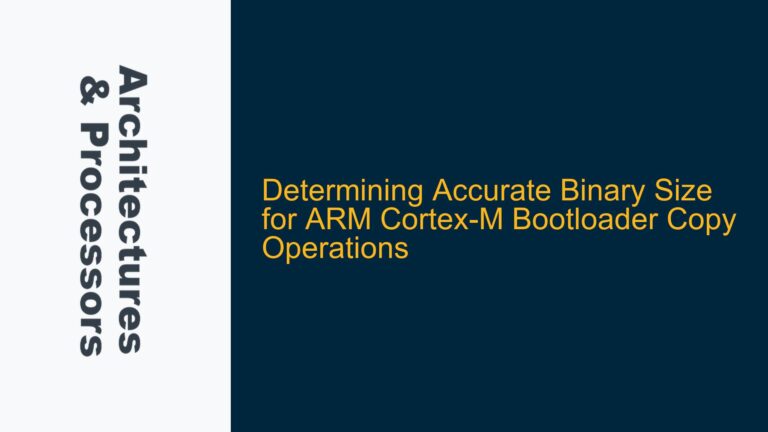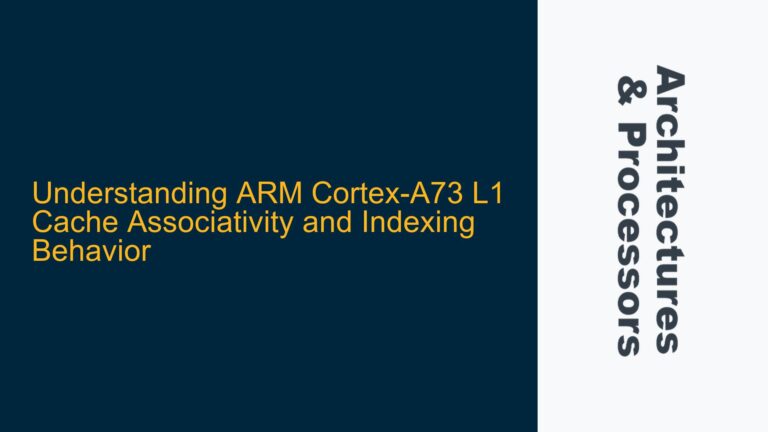ARM Musca A1 Memory Bandwidth Profiling Challenges
The ARM Musca A1 is a resource-constrained embedded development board featuring a dual-core ARM Cortex-M33 processor and three distinct memory types: 8 MB of FLASH memory, 2 MB of eSRAM, and 128 KB of iSRAM. Profiling memory bandwidth on such a system presents unique challenges due to the heterogeneous memory architecture, limited computational resources, and the absence of dedicated hardware performance counters typically found in higher-end ARM processors. The primary goal is to measure the effective bandwidth of each memory type, which is critical for optimizing firmware performance, especially in real-time systems where memory access patterns can significantly impact latency and throughput.
The theoretical bandwidth calculation for each memory type is straightforward: it involves multiplying the number of interfaces, the bus width, and the memory clock speed. However, this theoretical value often differs from the practical bandwidth due to factors such as bus contention, cache effects, and memory access patterns. For instance, the FLASH memory on the Musca A1 may have a high theoretical bandwidth, but its practical performance can be limited by access latency and the need for wait states. Similarly, the eSRAM and iSRAM may exhibit different bandwidth characteristics depending on whether they are accessed sequentially or randomly, and whether the data is cached or uncached.
Given the resource constraints of the Musca A1, traditional memory benchmarking tools like the STREAM benchmark are impractical. These tools are typically designed for systems with more abundant computational resources and may not provide accurate results on embedded platforms. Instead, custom profiling techniques must be employed, such as using memory copy functions or SIMD (Single Instruction, Multiple Data) instructions to measure the effective bandwidth. However, these methods come with their own set of challenges, including ensuring that the measurements are not skewed by cache effects or compiler optimizations.
Theoretical vs. Practical Bandwidth Discrepancies and Measurement Limitations
The discrepancy between theoretical and practical memory bandwidth on the ARM Musca A1 can be attributed to several factors. First, the memory hierarchy and caching mechanisms can significantly impact the effective bandwidth. For example, the Cortex-M33 processor features a configurable cache that can be enabled or disabled depending on the application requirements. When the cache is enabled, repeated access to the same memory location can result in cache hits, which artificially inflate the measured bandwidth. Conversely, cache misses can lead to lower-than-expected bandwidth due to the additional latency incurred when fetching data from main memory.
Second, the memory access patterns play a crucial role in determining the effective bandwidth. Sequential access patterns generally yield higher bandwidth compared to random access patterns, as the latter can result in more frequent cache misses and higher latency. This is particularly relevant for the FLASH memory on the Musca A1, which may have a higher latency compared to the eSRAM and iSRAM. Additionally, the use of DMA (Direct Memory Access) controllers can further complicate bandwidth measurements, as DMA transfers can occur concurrently with CPU accesses, leading to bus contention and reduced effective bandwidth.
Third, the compiler optimizations can also impact the accuracy of bandwidth measurements. For instance, the compiler may optimize away memory copy operations if it determines that the data is not used afterward, leading to artificially high bandwidth measurements. Similarly, the use of SIMD instructions can improve bandwidth, but only if the data is properly aligned and the memory access patterns are conducive to vectorized operations. Therefore, it is essential to carefully design the profiling code to ensure that the measurements reflect the true memory performance.
Custom Profiling Techniques for ARM Musca A1 Memory Bandwidth
To accurately measure the memory bandwidth on the ARM Musca A1, custom profiling techniques must be employed. One approach is to use memory copy functions to transfer data between different memory regions and measure the time taken for the transfer. This method can provide a rough estimate of the effective bandwidth, but it must be carefully implemented to avoid the pitfalls discussed earlier. For example, the memory copy function should be designed to minimize cache effects by using uncached memory regions or by flushing the cache before each measurement. Additionally, the function should be executed multiple times to account for any variability in the measurements.
Another approach is to use SIMD instructions to perform memory-intensive operations and measure the time taken for these operations. SIMD instructions can significantly improve memory bandwidth by processing multiple data elements in parallel, but they require careful alignment of data and proper handling of memory access patterns. For instance, the ARM Cortex-M33 processor supports the ARMv8-M architecture, which includes SIMD instructions for efficient data processing. By leveraging these instructions, it is possible to achieve higher memory bandwidth compared to scalar operations. However, the use of SIMD instructions also introduces additional complexity, as the data must be properly aligned and the memory access patterns must be optimized for vectorized operations.
In addition to these techniques, it is also important to consider the impact of the memory controller and the bus architecture on the effective bandwidth. The ARM Musca A1 features a multi-layer AHB (Advanced High-performance Bus) matrix that connects the processor cores to the different memory regions. This bus architecture can introduce contention and latency, especially when multiple masters (e.g., the CPU and DMA controller) are accessing the same memory region simultaneously. Therefore, it is essential to account for these factors when designing the profiling code and interpreting the results.
To summarize, measuring memory bandwidth on the ARM Musca A1 requires a combination of theoretical analysis and practical experimentation. By understanding the memory hierarchy, caching mechanisms, and bus architecture, it is possible to design custom profiling techniques that provide accurate and meaningful results. These techniques can then be used to optimize firmware performance and ensure that the system meets its real-time requirements.
Detailed Analysis of Memory Types on ARM Musca A1
The ARM Musca A1 features three distinct memory types, each with its own characteristics and performance considerations. Understanding these memory types is essential for designing effective bandwidth profiling techniques and optimizing firmware performance.
FLASH Memory (8 MB)
The FLASH memory on the ARM Musca A1 is non-volatile and is typically used for storing firmware and application code. FLASH memory has a higher access latency compared to SRAM, and its performance can be further impacted by the need for wait states and the wear-leveling algorithms used to extend its lifespan. When profiling the bandwidth of FLASH memory, it is important to consider the impact of these factors on the effective bandwidth. For example, sequential reads from FLASH memory may yield higher bandwidth compared to random reads, as the latter can result in more frequent wait states and higher latency.
eSRAM Memory (2 MB)
The eSRAM (embedded Static RAM) on the ARM Musca A1 is a high-speed volatile memory that is typically used for storing data that requires frequent access. eSRAM has a lower access latency compared to FLASH memory and does not require wait states, making it ideal for high-performance applications. However, the effective bandwidth of eSRAM can be impacted by factors such as cache effects and bus contention. For example, if the cache is enabled, repeated access to the same eSRAM location can result in cache hits, which can artificially inflate the measured bandwidth. Conversely, cache misses can lead to lower-than-expected bandwidth due to the additional latency incurred when fetching data from eSRAM.
iSRAM Memory (128 KB)
The iSRAM (internal Static RAM) on the ARM Musca A1 is a small, high-speed volatile memory that is typically used for storing critical data and stack space. iSRAM has the lowest access latency among the three memory types and is often used for time-critical operations. However, its small size limits its use to specific applications, and its effective bandwidth can be impacted by factors such as cache effects and bus contention. For example, if the cache is enabled, repeated access to the same iSRAM location can result in cache hits, which can artificially inflate the measured bandwidth. Conversely, cache misses can lead to lower-than-expected bandwidth due to the additional latency incurred when fetching data from iSRAM.
Practical Implementation of Memory Bandwidth Profiling
To implement memory bandwidth profiling on the ARM Musca A1, the following steps can be taken:
-
Disable Cache: To minimize the impact of cache effects on the measurements, the cache should be disabled during the profiling process. This can be done by configuring the cache control registers in the Cortex-M33 processor.
-
Use Uncached Memory Regions: If disabling the cache is not feasible, uncached memory regions can be used for the profiling code. This ensures that the measurements are not skewed by cache hits or misses.
-
Flush Cache Before Measurements: If the cache cannot be disabled, it should be flushed before each measurement to ensure that the data is fetched from main memory and not from the cache.
-
Design Memory Copy Functions: Custom memory copy functions should be designed to transfer data between different memory regions. These functions should be optimized for the specific memory type being profiled and should minimize the impact of cache effects and bus contention.
-
Use SIMD Instructions: SIMD instructions can be used to perform memory-intensive operations and measure the time taken for these operations. The data should be properly aligned, and the memory access patterns should be optimized for vectorized operations.
-
Account for Bus Contention: The impact of bus contention on the effective bandwidth should be accounted for by ensuring that the profiling code is executed in isolation, without interference from other bus masters such as the DMA controller.
-
Repeat Measurements: The profiling code should be executed multiple times to account for any variability in the measurements. The results should be averaged to obtain a more accurate estimate of the effective bandwidth.
By following these steps, it is possible to obtain accurate and meaningful measurements of the memory bandwidth on the ARM Musca A1. These measurements can then be used to optimize firmware performance and ensure that the system meets its real-time requirements.
Summary of Key Considerations
- Memory Hierarchy: The ARM Musca A1 features a heterogeneous memory architecture with FLASH, eSRAM, and iSRAM. Each memory type has its own characteristics and performance considerations.
- Cache Effects: The Cortex-M33 processor features a configurable cache that can significantly impact the effective bandwidth. Cache effects should be minimized during the profiling process.
- Memory Access Patterns: Sequential access patterns generally yield higher bandwidth compared to random access patterns. The profiling code should be designed to account for this.
- Compiler Optimizations: Compiler optimizations can impact the accuracy of bandwidth measurements. The profiling code should be carefully designed to ensure that the measurements reflect the true memory performance.
- Bus Contention: The multi-layer AHB matrix on the ARM Musca A1 can introduce contention and latency. The impact of bus contention on the effective bandwidth should be accounted for.
- Custom Profiling Techniques: Custom profiling techniques, such as memory copy functions and SIMD instructions, should be employed to measure the effective bandwidth on the ARM Musca A1.
By understanding these key considerations and implementing the appropriate profiling techniques, it is possible to accurately measure the memory bandwidth on the ARM Musca A1 and optimize firmware performance for real-time applications.

